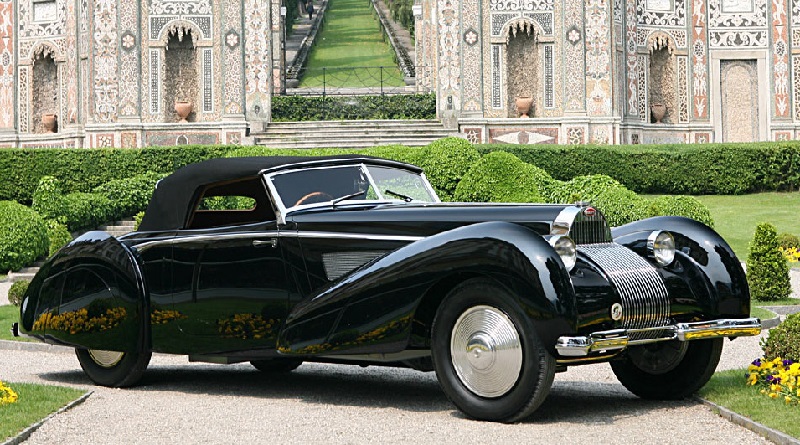1939 Bugatti Type 57 C Voll & Ruhrbeck Cabrio
Up until 1934 there was a separate Bugatti model for almost every body type. To cut costs Ettore Bugatti decided to design one chassis that would be available with various body styles. Most of them were to be designed and constructed in the Bugatti factory. In charge of the new model’s design team was Ettore’s son, Jean Bugatti. He was just 23 years of age when the ‘Type 57’ project started in 1932.

The Type 57 Bugatti was the ultimate road car. They were fitted with some of the day’s finest coachwork available, having incredibly complex and powerful power plants, and a chassis that matched well with the typical custom coachwork of the day. Considered to be the finest automobile of the day, Bugatti chassis were delivered to various coach builders.
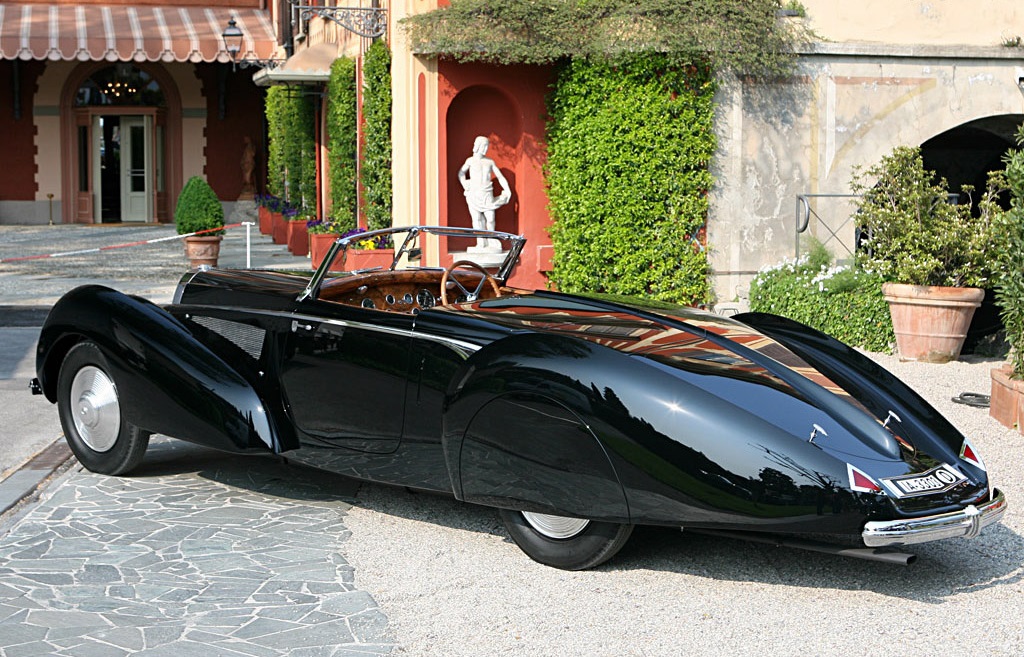
This one-off 1939 Bugatti Type 57C Roadster is powered by a 220 horsepower, 3.3 l (199 ci / 3257 cc), twin overhead cam, inline, supercharged, eight-cylinder engine coupled to a Bugatti four-speed gearbox. The wheelbase is 3.3m. Suspension is semi-elliptic leaf springs; brakes are four-wheel hydraulic drums. The ‘C’ stands for compressor, noting the supercharger on the engine.
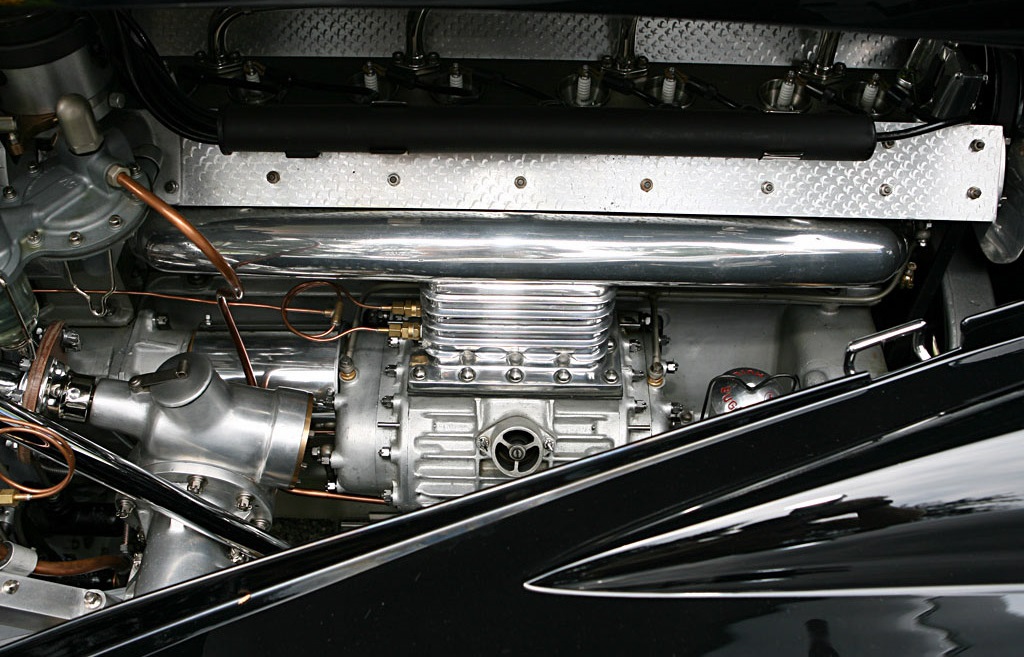
At its launch four bodytypes were available for the Type 57. Three of these were named after mountain peaks in the Alps; the four-seater, two-door ‘Ventoux’, the four-door ‘Galibier’ and the two-door ‘Stelvio’ convertible. Unlike the other bodies, the Stelvio body type was designed and built by French coach-builder Gangloff. The fourth body was dubbed Atalante and was the two-seater coupe variant.
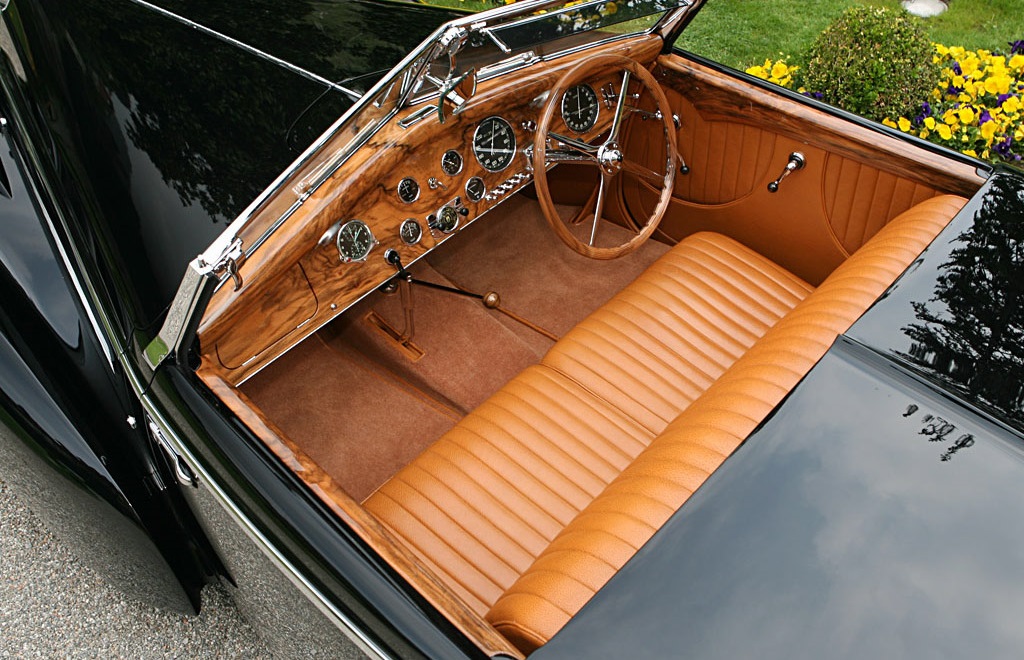
This car is known as the ‘Car with the waterfall grill.’ Its first driver in 1939 was the famous Olympic ice skater Sonja Henie. It was not registered to her, but was made available to her.
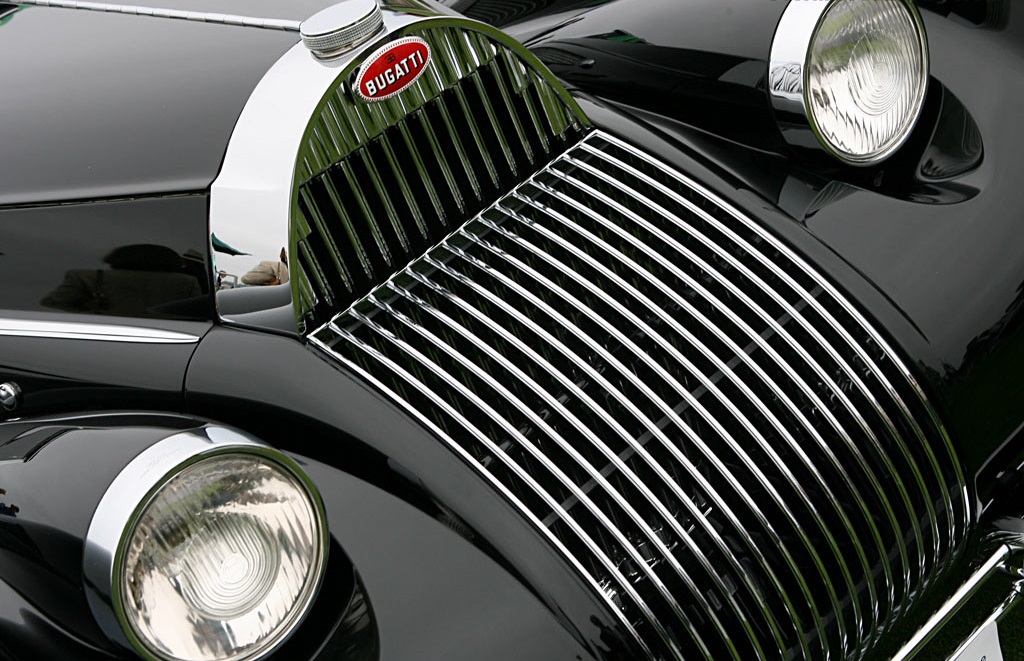
The Great Depression was slow to impact France, due to that country’s high tariffs and restricted trade, but by the early 1930s, sales of luxury automobiles dwindled. Ettore Bugatti and his brilliant son Jean understood that a special model was imperative to help their company survive. The resulting new Type 57’s styling was at once contemporary and affordable, with custom coachwork available for the very wealthy.

